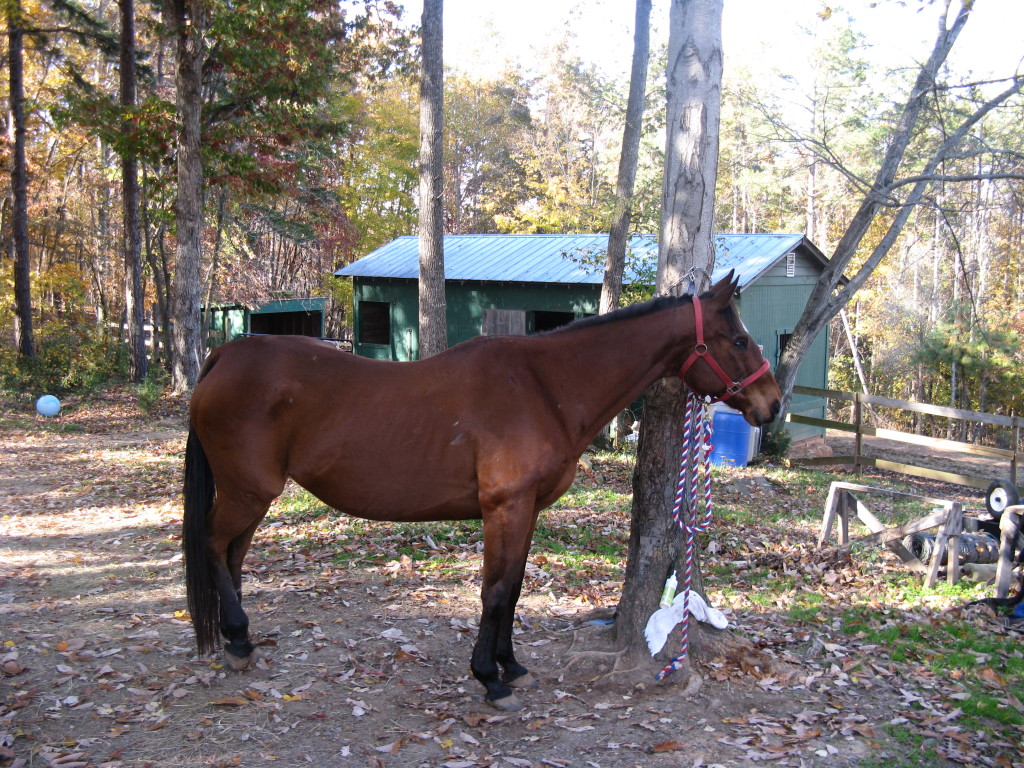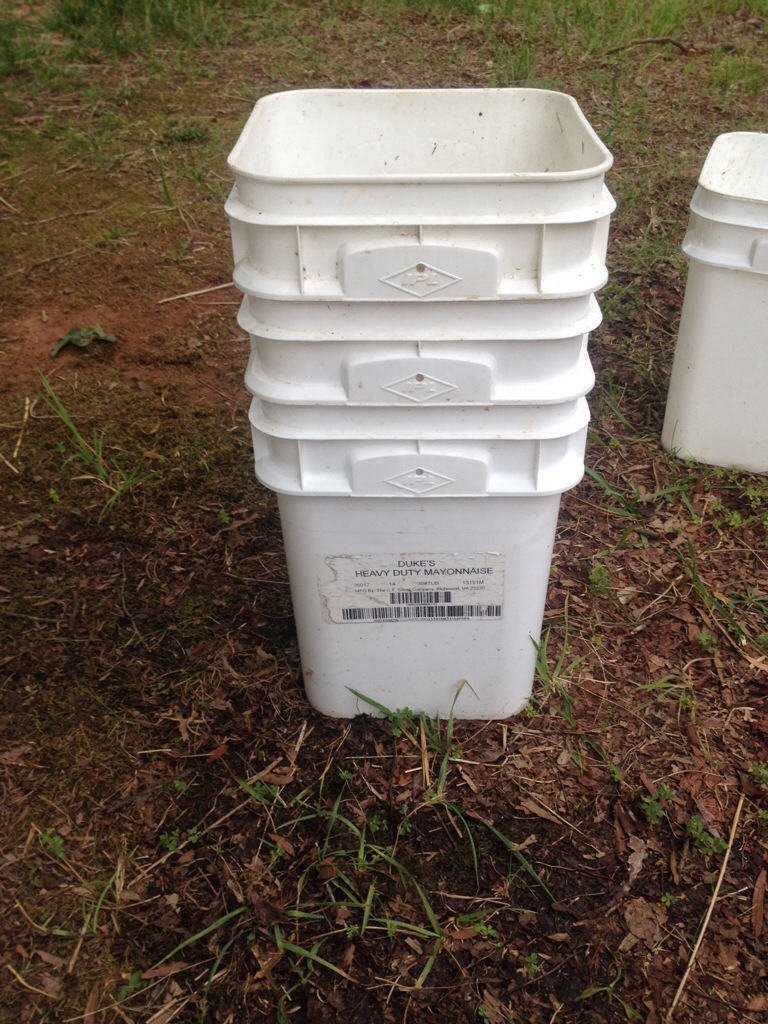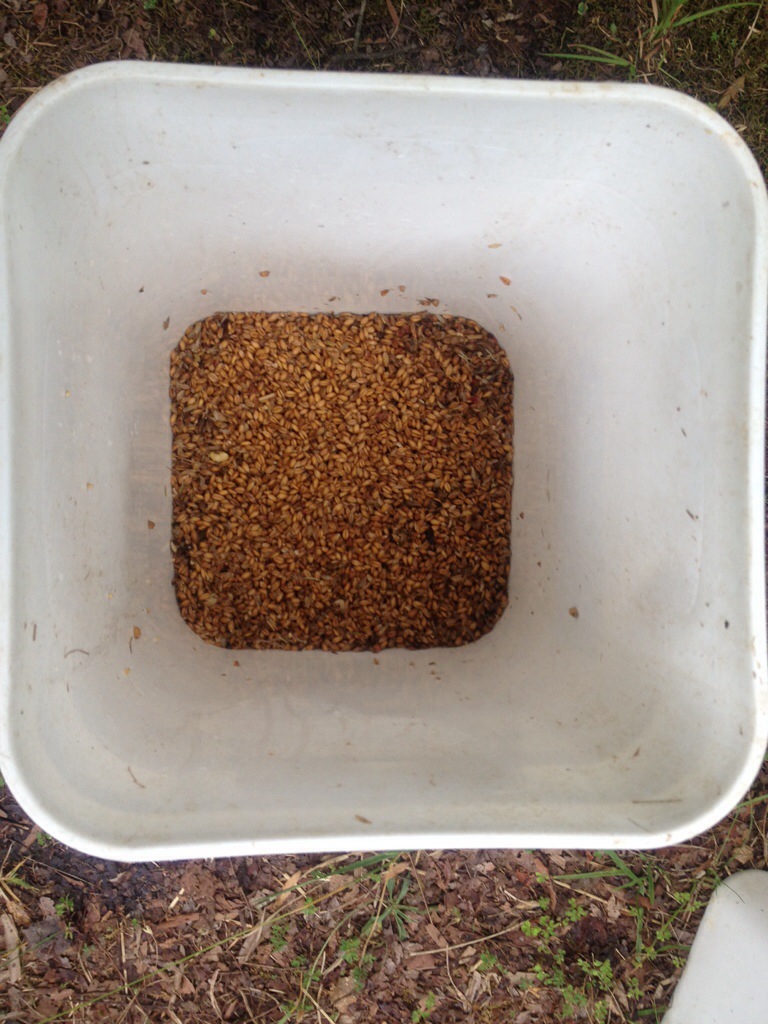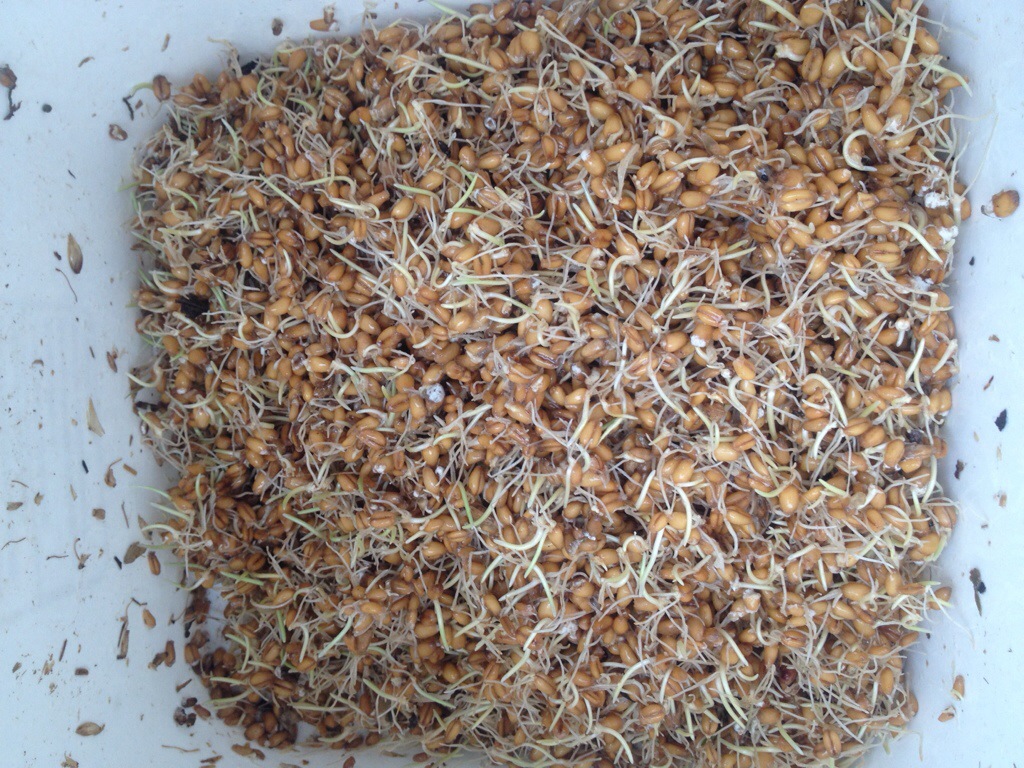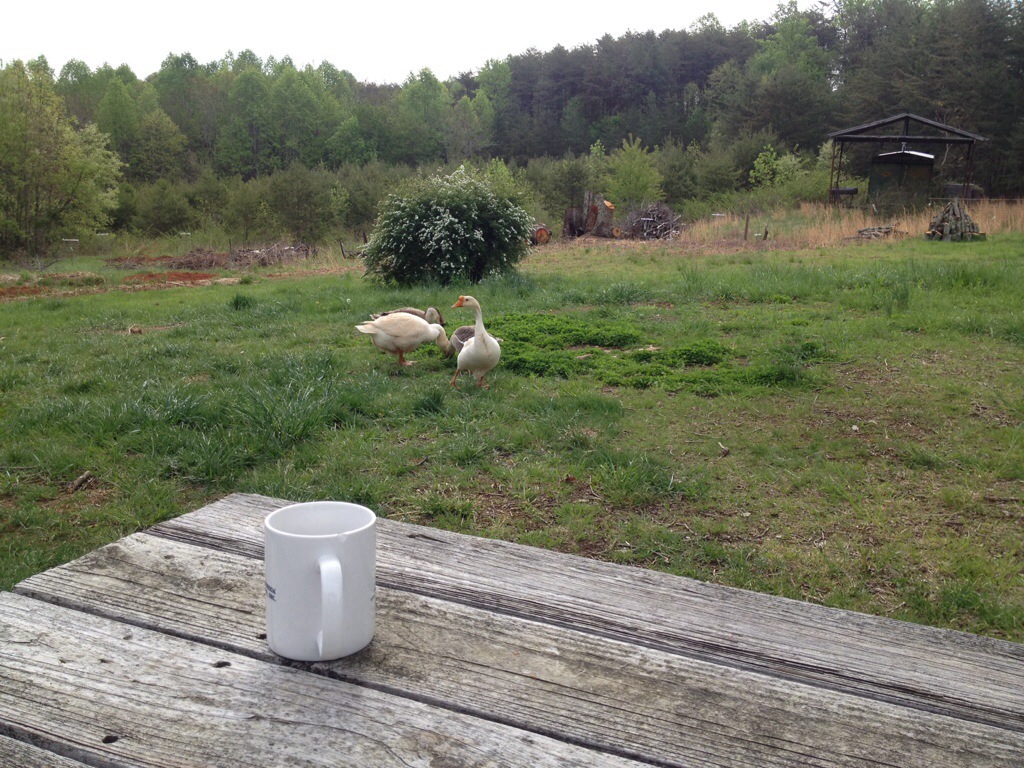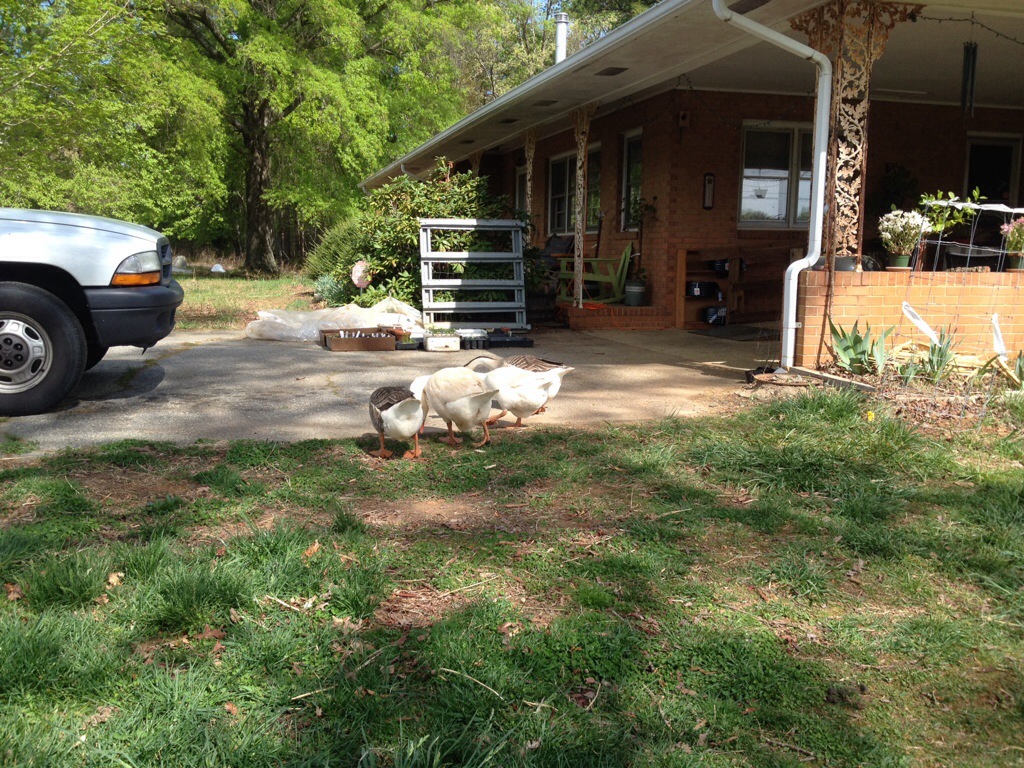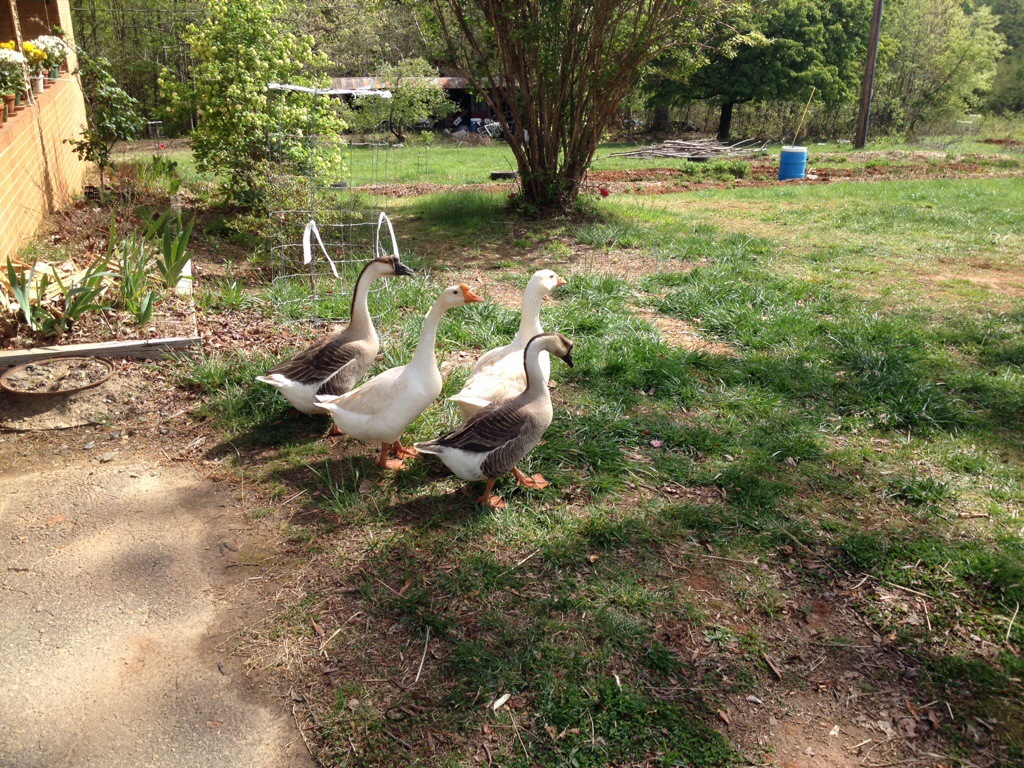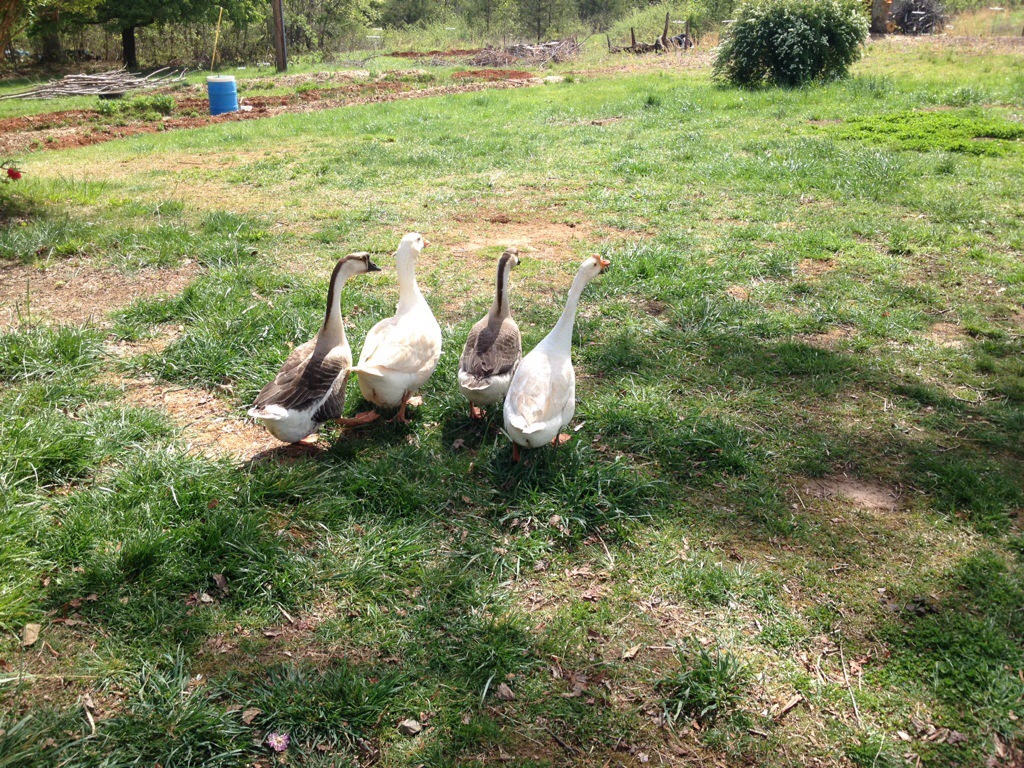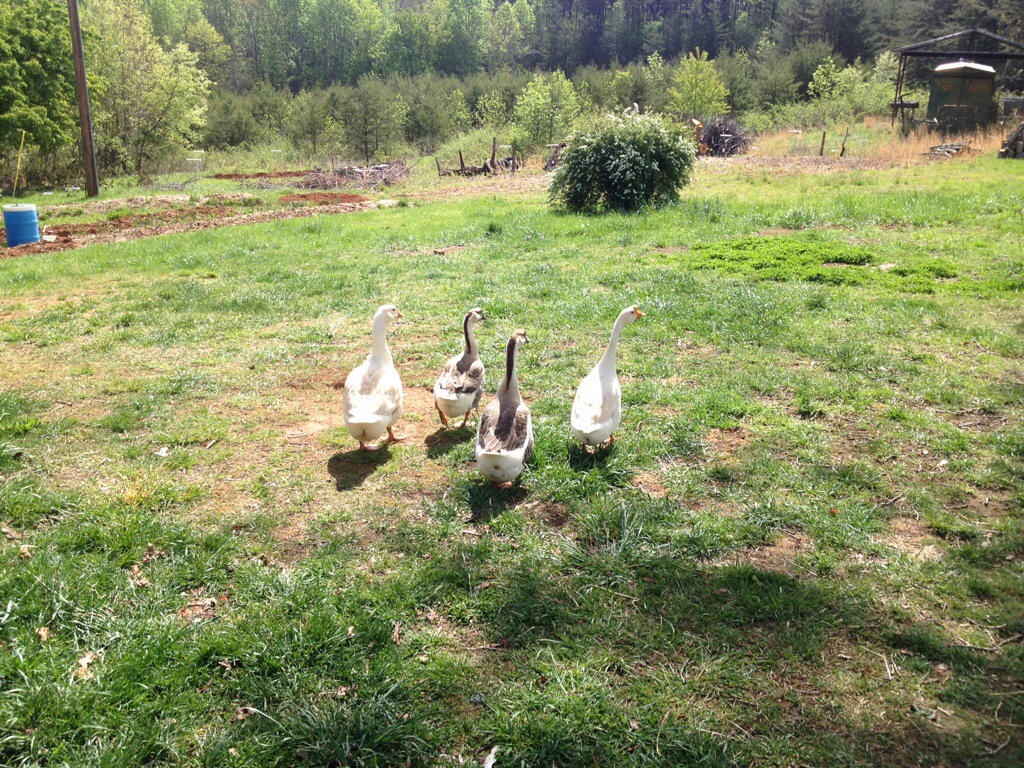It is with great pleasure that I introduce you to the newest members of Kuska Wiñasun Homestead! The Pigs!
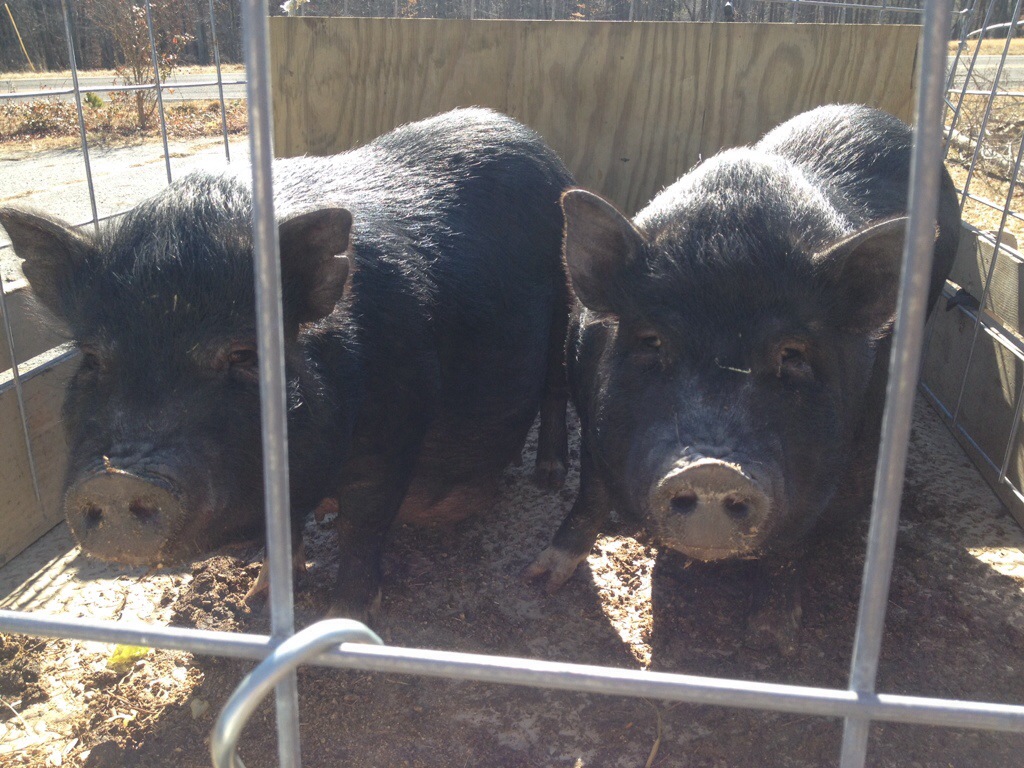
New Pigs on the homestead
This weekend we jumped on an offer to buy a breeding trio of Asian Heritage Hogs (aka Pot Bellied Pigs) and 4 piglets. The two beautiful ladies above are sisters, and they are mated to Gandalf. According to their previous owner they are proficient procreaters and have been successful at raising litters of 7-11 piglets multiple times per year.
Now, we were so excited to get these guys that we kind of underestimated what it took to load, transport and unload a passel of pigs. Our original plan was to load the big guys into our small trailer, and the little guys in the back of our pickup. Well, to keep a long story short, all hell broke lose.
At first, we tried to guide/cajole the pigs up a ramp and into the trailer. This resulted in all of the pigs escaping as they barreled through walls, and over and under the makeshift fences we tried to use as chutes.
So then after about 20 minutes of chasing down pigs, we tried again. The idea this time was to manhandle the sisters into the trailer by grabbing their back legs and walking them up wheelbarrow style.
Yeah, that didn’t work either. Instead, we were treated to the loudest most horrifying squeals of bloody-pig-murder, and when we finally got 1 onto the trailer, she immediately barreled through our lame attempts to keep her there, and again, we had to chase pigs.
I don’t know how we finally got them on the trailer. But we did. The two girls that is. Gandalf, tusks and all, was still waiting. We decided not to risk letting the other ladies out and opted to load Gandalf into the back of our enclosed pickup truck.
Yet again, we concocted a plan that involved ramps, chutes, and makeshift walls out of plywood, pallets, and bales of straw. For some reason we thought that if we let him out near the back of truck we could use wooden shields to guide him up the ramp and into the back of the truck. Ha.
This turned out to be a pretty exhilarating 5 minutes of life. I feel like I combined my years playing shortstop, with some unbeknownst to me skill as a rodeo clown, to somewhat successfully not get gored and block Gandalf’s attempted escapes. But escape he did, and after another round of chasing pigs, we eventually pinned him down, grabbed him by the legs and flipped him into the truck like a sack of potatoes.
3 down, 4 to go.
Again, not wanting to risk any escapes, we decided to transport the piglets in the back of our SUV. The plan was to catch them, one at a time, and carry them to the car to be loaded through the hatchback window. I’m sure you can guess how this turned out.
Squeals of bloody-pig-murder and chasing escaped pigs? You betcha!
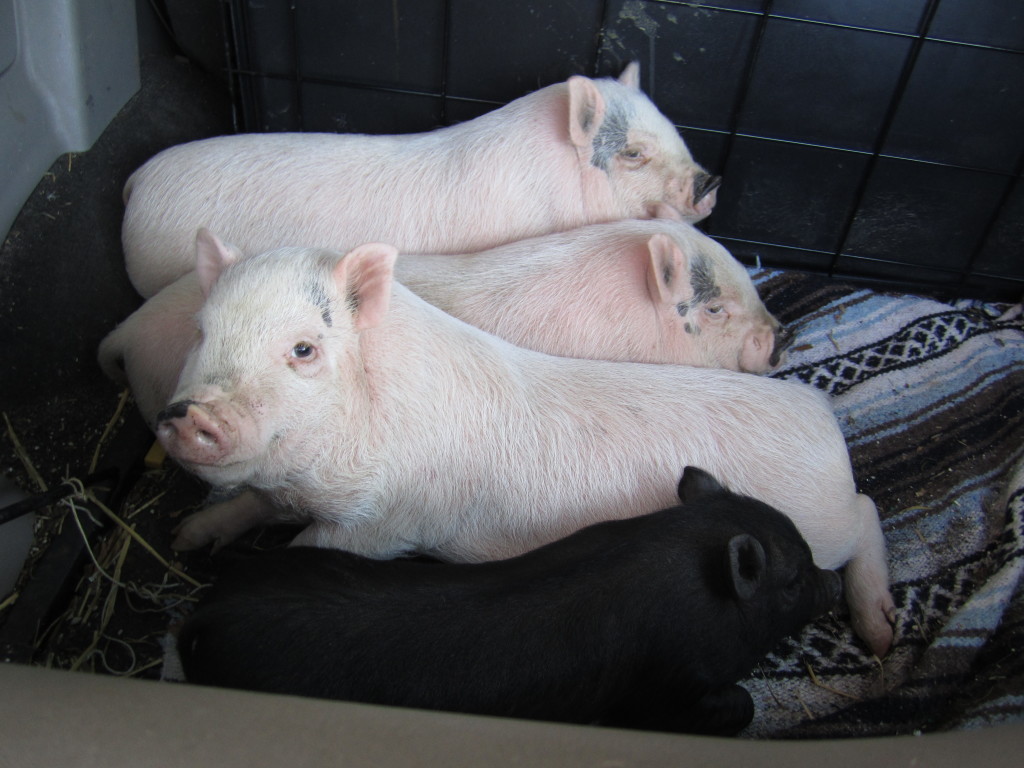
Pigs on a blanket
We finally got them all, and after 1 hurdled over the back seat and almost got loose, we headed home, all 7 pigs in tow.
We got home fine, set up a temporary pig house made out of cattle panels and chicken wire, and successfully unloaded all of the pigs with a shade less hilarity and emotion.
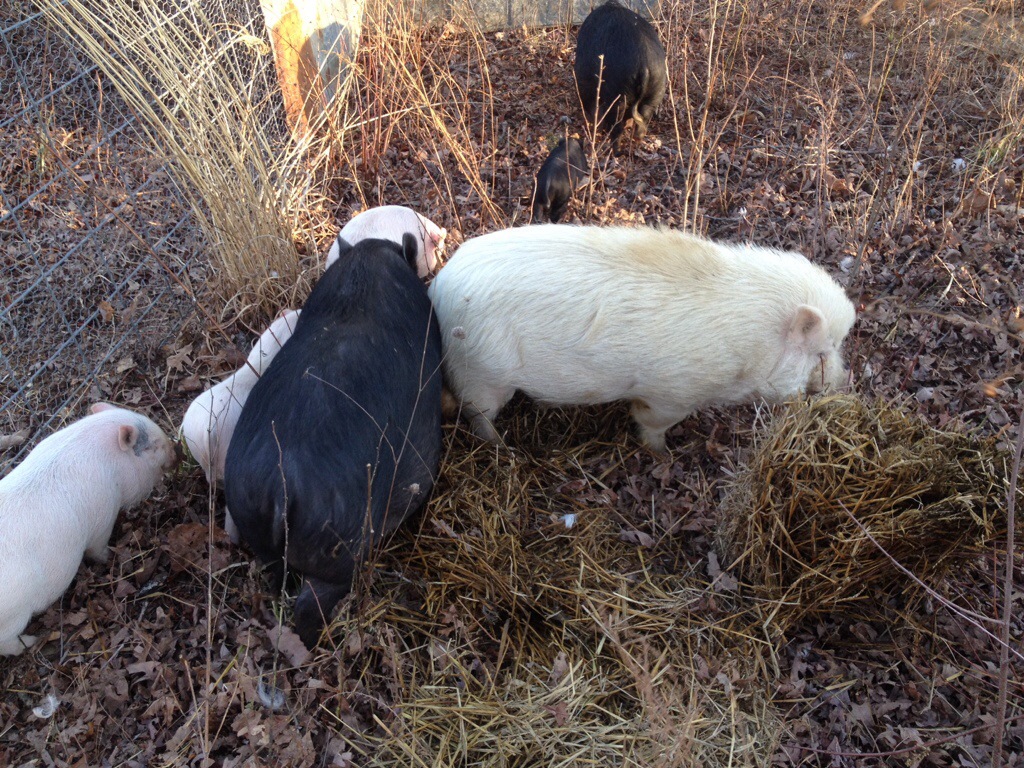
Gandalf and his buddies
They are currently enjoying a nice patch of yard where they are helping to eradicate some poison oak and happily munching on acorns, old apples, and cull sweet potatoes while they plot their escape.

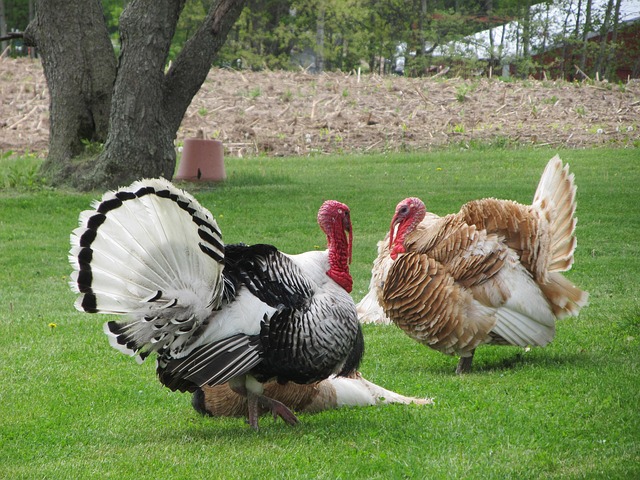



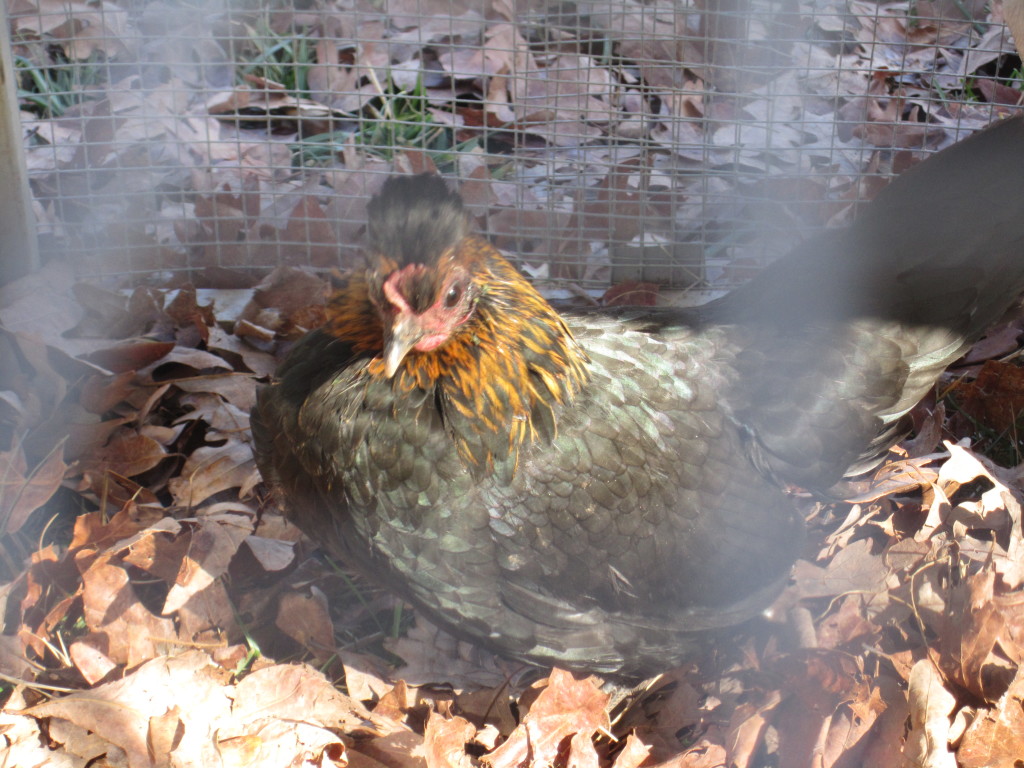
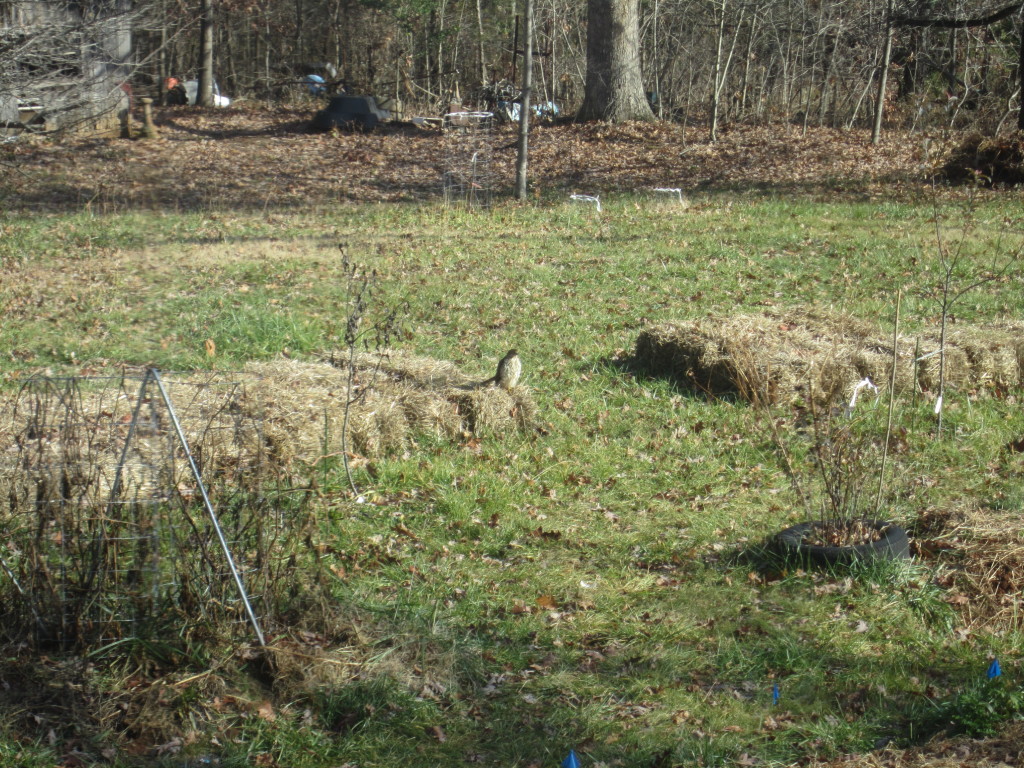
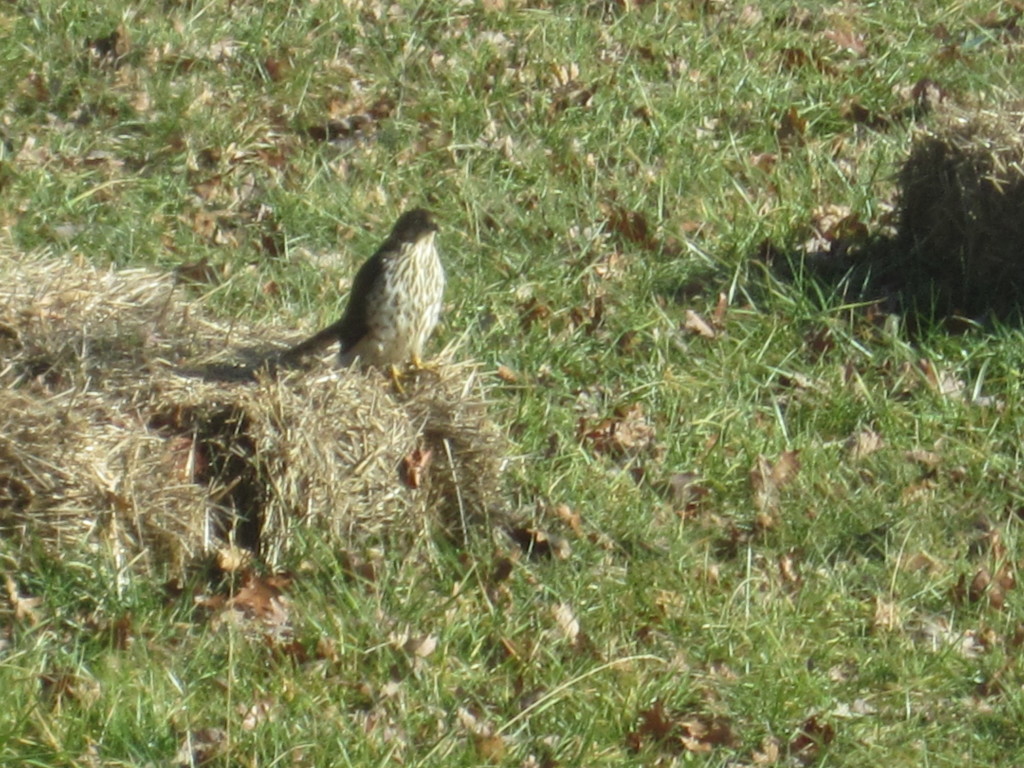
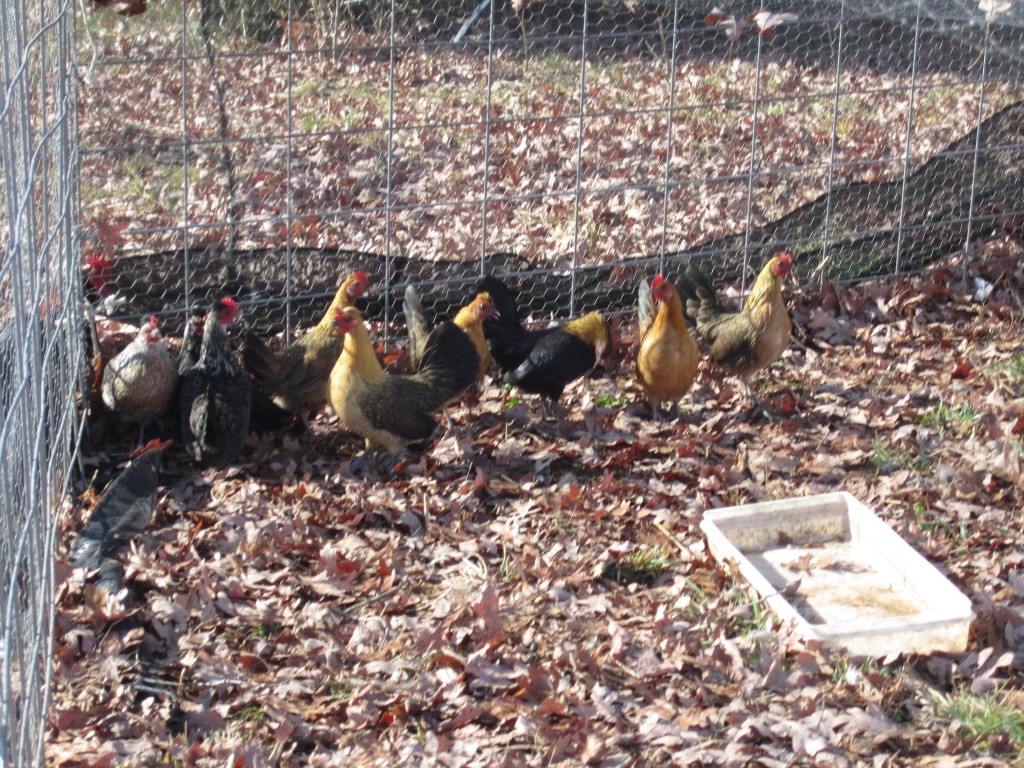



_in_Kalamiaris_Palm_Forest,_Panayoudha,_Lesvos.jpg)
